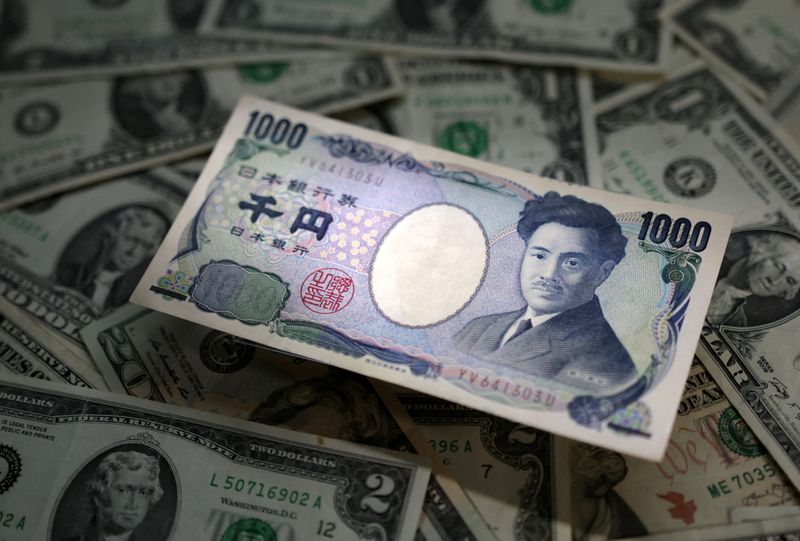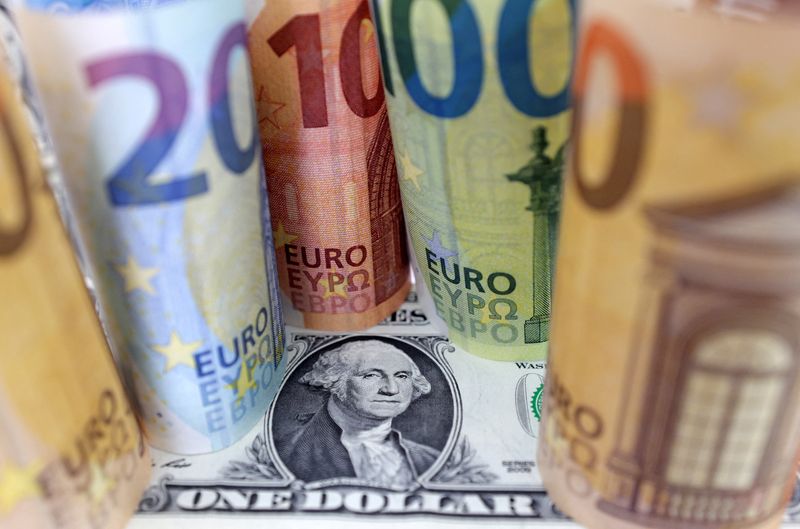By Alden Bentley
NEW YORK (Reuters) -The dollar fell broadly on Wednesday in thin pre-holiday trade, digesting a slew of indicators that underscored U.S. economic resilience while investors assessed the risk that President-elect Donald Trump will start a tariff war no one will win.
The decline further unwound the dollar's recent rally. Few traders were interested in building or holding positions before a long Thanksgiving weekend for many of them that dovetails with month end. Markets are closed Thursday and exchanges close early on Friday.
Moreover, revised data showing gross domestic product rose at a 2.8% rate in the third quarter, as expected and the same as last month's first estimate, did not much bolster the case for the Federal Reserve to ease again next month, although traders still leaned that way, lifting odds a bit to 67%.
Neither did consumer spending data that showed progress on lowering inflation appears to have stalled in recent months while the economy retained much of its solid growth momentum early in the fourth quarter.
"We all expected that inflation would pop up a little bit, but inflation is not getting out of hand. And that's the key,” said Peter Cardillo, chief market economist at Spartan Capital Securities in New York.
“This paves the way for a 25 basis point cut in December and then probably a pause. But the pause won't likely be due to inflation data, but because of uncertainties over Trump's tariffs. I think the Fed will grow cautious.”
The Commerce Department's personal consumption expenditures price index climbed 0.2% in October, matching September's unrevised gain. In the 12 months through October, the PCE price index increased 2.3% after advancing 2.1% in September.
While October durable goods orders rose a smaller-than-expected 0.2%, applications for unemployment benefits at 213,000 were a bit lower than last week's upwardly revised 215,000 jobless claims, indicating a solid labor market.
Dollar/yen fell to its lowest in about five weeks, and was down 1.43% at 150.91 as trading wound down. The weakening dollar lifted the euro 0.74% to $1.0564. The euro/dollar pair hit its highest in a week, while the dollar index, which measures the greenback against a basket of currencies including the yen and the euro, fell to its lowest since Nov. 13 and in afternoon trade was off 0.74% at 106.06. That put it down 1.9% from a two year high hit on Friday.
"Today may be a bit more about some profit taking, at least for the U.S. for a long weekend. "It's had, like I said, a phenomenal run here and still remains very, very robust," said Amo Sahota, executive directors of Klarity FX in San Francisco.
Trump's vows on Monday of big tariffs on Canada, Mexico and China, the United States' three largest trading partners, knocked their currencies lower and have left investors jittery.
Some analysts argued that inflation risks from tariffs and proposed tax cuts could prevent Trump from ushering in more disruptive measures.
"The recent sharp dollar appreciation largely decreases the asset values in dollars outside U.S. and hence increases the rebalancing need to sell the dollar at the month-end," said Sheryl Dong, forex strategist at Barclays (LON:BARC).
The outperforming yen has benefited from bets for a December rate hike in Japan, and position adjustments.
The dollar's sell-off accelerated on Wednesday after the pair fell below the 200-day moving average at 151.99.
"That I would deem that as being fairly significant in today's marketplace as well, just technically," Sahota said.
Analysts noted that there was some relief that the country is not in the firing line of Trump's possible tariffs.
"Japan has a strong hand in dealing with U.S. trade concerns," said Jane Foley, senior forex strategist at RaboBank.
It "is the U.S.'s largest overseas holder of U.S. Treasuries and the largest provider of foreign direct investment into the U.S.," she added.
A ceasefire between Israel and Iran-backed group Hezbollah came into effect on Wednesday under a deal that aims to end hostilities across the Israeli-Lebanese border. While not a big factor on Wednesday, the wars in the Middle East and Ukraine have been a support for the dollar as a safe haven.
Against its Canadian counterpart, the greenback slipped 0.18% to C$1.4027 , after touching a 4-1/2-year high of $1.4177 on Tuesday.
The dollar was little changed against the Mexican peso near Tuesday's top that was its highest against since July 2022, fetching 20.622 pesos.
Sterling strengthened 0.81% to $1.267, the Australian dollar strengthened 0.34% to US$0.6494 and the kiwi strengthened 1.06% to US$0.5896.

The Chinese yuan steadied after drooping on Tuesday's tariff news. The dollar was 0.15% lower at 7.245 per dollar.
In cryptocurrencies, bitcoin was up 5.19% at $96,414, digesting its run up to almost $100,000 last week.
